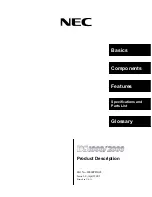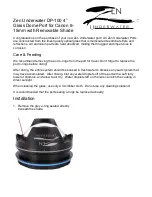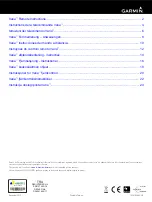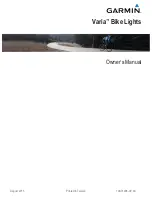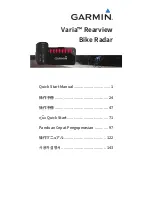
nucamprv.com • Teardrop Campers
29
Teardrop Campers • nucamprv.com
28
8. If you have jack pads, place them under the four stabilizer jacks.
9. Extend the stabilizer jacks at the tongue jack controls.
10. Place a level on the floor of the camper to determine whether it is level. Adjust the stabilizer jacks
until the floor is level.
11. At this point you are ready to connect 110V power, turn on the propane gas for cooking and start
enjoying your outdoor experience.
A flyer with all needed information on how to operate the Stabilizing System is included in your
owner’s packet.
AXLE & BRAKE SYSTEM
Your travel trailer is equipped with an electrically actuated brake system comprised of the
following elements:
• Tow vehicle battery
• Brake controller (on tow vehicle)
• 7-pin connector plug
• Trailer battery
• Breakaway switch
• Electric drum brakes
Important Information about your brakes:
• Trailer brakes are designed to work with tow vehicle brakes to maintain proper performance.
• Using either tow vehicle or trailer brakes as separate systems will increase wear and tear and may
void warranties. Use them together.
• Brake shoes need to be adjusted after 1,000 miles or after 40 medium-hard brake stops. This
process is called “burnishing” and fits or “seats” the brake shoes to the drum. After this break-in
period, schedule for service with your dealer or another qualified technician to have the brakes
adjusted or proper performance and durability.
• Brakes must be adjusted every 12,000 miles or as routine maintenance requires.
• If you experience brake lock-up, shuddering, or uneven braking, it is quite often due to the
lack of synchronization between your vehicle and trailer brake systems, too high threshold
voltage, or improperly adjusted brakes. If the problem persists, contact your dealer or other
qualified technician for diagnosis and repair.
• The primary source of power for your trailer’s braking system is your tow vehicle battery. Always
keep your tow vehicle battery and its charging system properly maintained and serviced.
• If you are installing an after market brake controller, it must be installed according to
manufacturer recommendations for proper tow vehicle and trailer brake synchronization. Contact
your tow vehicle dealer for assistance in installation.
• Brakes can be manually adjusted at the brake controller in your vehicle to provide the correct
braking capability for varying road and load conditions. Depending on load and driving
conditions, you will have to make frequent small adjustments to accommodate.
• Your axle and brake system are supplied by Dexter Axle. All information relating to the brakes
and axles can be found in the Operation, Maintenance and Service Manual included in your
owner’s packet. Make sure to read and understand the Manual before you operate the
trailer. If you cannot locate a copy of the Manual, it is available on Dexter’s website here:
https://www.dexteraxle.com/resources/manuals/-in-tags/tags/Light-Duty
.
HEATING & COOLING
ALDE
®
HEATING SYSTEM
Most nuCamp campers are equipped with the
Alde
®
Hydronic Heating System. This system is
designed to provide warmth and comfort in all
weather conditions.
Advantages of the Alde
®
System:
• The much quieter, gradual warmth that spreads through the
camper, as opposed to loud blasts of air from regular RV furnaces.
• The Alde
®
System serves a dual purpose, not only heating the space
but providing on-demand hot water.
• Both propane gas (with 12V for the control panel) and 120V shore
power can be used to fuel the Alde
®
System.
It may take a little practice to learn how to operate the Alde
®
System. But
once you do, you will appreciate its performance and dependability.
Some basic information about the Alde
®
System set-up in your
nuCamp camper:
• The Alde
®
Hydronic Heating System is simple but elegant, with a
design that dates to the early 18th century in Sweden. The Alde
system was especially designed for RV use in the cold north and the
company has had many years of experience in this. This makes Alde
ideal for use in nuCamp campers.
• Glycol fluid is heated in a boiler, pumped around pipes to heat
emitters and then radiates heat naturally into the air. The hot water
supply is heated in the same way.
• The heating fluid is propylene glycol antifreeze, and as it is heated,
it exchanges heat through a stainless-steel jacket with the domestic
hot water cylinder/tank. As a result, the water is heated at the same
time the Glycol is heated. This makes the Alde
®
system very efficient.
• The Alde
®
System’s computerized electronics (such as the control
panel) use 12V Power, and the heating will run off 120V and /or
propane. Whether you have the unit on Propane or 120V, it
will always require a small amount of 12V power (.6amps/hour).
• The Alde
®
3020 Compact Boiler is located underneath the bed
area. To access, lift the cushions. You may need to remove some
cushions to access it fully.
• Typical warm-up time for the Alde
®
System from cold to a
comfortable temperature in the camper is about one hour. Take
this into consideration when using the heat system. If it takes longer
than this, have your dealer troubleshoot the system.
When using the Alde
®
System for the first time:
1. Make sure your Alde
®
bypass valve is turned to “Normal” Operation.
2. Confirm there is no RV antifreeze in the Alde
®
Domestic Water Tank.
This can occur if the unit has been winterized.
Hot water at temperatures above 120°F
(49°C) can cause serious scalding injuries
and in extreme cases, death. Always test
water temperature before showering.
WARNING































